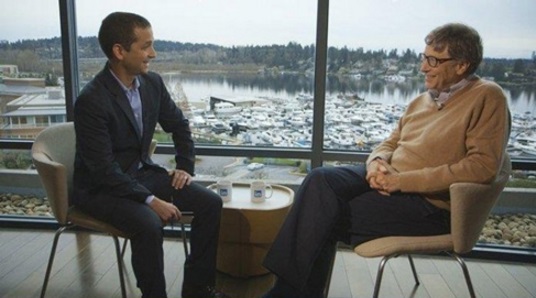
Bill Gates’ first annual letter about his family’s philanthropic efforts debuted in 2009 and ran 22 pages long. In it, Gates covered 7 major topics and countless smaller ones, from how he met his wife, Melinda, to the role of Monte Carlo Simulations in evaluating malaria-fighting options; from staggering childhood death figures to the lack of feedback loops in philanthropy.
This year, he focused. In his annual letter, which launched Monday night, he tackles just one subject: clean, accessible energy. (Melinda has her own section detailing the unfair workload placed on women in poor countries.) It was a curious decision for the famously intellectually-expansive Gates, who as CEO of Microsoft used to hole up in a secret cottage for bi-annual “think weeks,” in which he’d spend 18-hour days consuming 100+ wide-ranging papers.
But as he explains in the letter, focusing on energy makes all of his other life-improving efforts easier to enact. Get the more than 1 billion people who live without energy hooked to the grid and suddenly, “you can run hospitals, light up schools and use tractors to grow more food.”
That’s the feel good side. The darker side of the energy focus is that the energy has to be delivered with absolutely no carbon dioxide emissions, something that will only happen via an "energy miracle." He skips the pleasantries on why: “Time is not on our side.” In order to stop irreparable harm to the planet, we need to completely eliminate the 36 billion tons of carbon dioxide we emit a year. Not cut it, not curb it, but eliminate it — and do so by the end of the century.
In an interview in his offices outside of Seattle, Gates talked to me about why he’s optimistic that this miracle is coming — by the deadline he lays out — and whether he’s hearing the right urgency from the U.S. presidential candidates. (In a clean energy white paper he published last fall, Gates explicitly called out government to play an “indispensible role” in funding energy initiatives. If a full-throated endorsement of this idea has come up in any of the debates, I've missed it.)
We also talked about the unusual tone he took in writing this year’s letter. While his annual paper is carefully studied by schools, non-profits and governments — no surprise, as the Gates Foundation gives out nearly $4 billion each year — this year both he and Melinda tailored their message to high school kids. The letter is dotted with asides, marginalia and pop culture references — and they frame their search for solutions as “superpowers.” At the end, they make a plea for students to get involved now. But the problems they lay out aren’t ones that high school kids are going to be able to solve; far from it. In one section, Gates pours cold water on innovations that might seem massive, but aren’t: “Someone may tell you they know how to remove 100 million tons of carbon per year. That sounds like a lot… [but] they’re talking about less than 0.3 percent of the problem.”
Finally, we discussed what lessons he’s learned in 16 years of global philanthropy that other technology moguls like Mark Zuckerberg — whoseInternet.org stumbles were debated by an entire country — are only now painfully discovering. “It's not easy to get things out but you've got to work with the government, you've got to be very patient,” Gates told me. “You learn, you try different things.... We kind of knew that going in and we are going to be around 10 years from now, 15 years from now, 20 years from now so we can take the lessons — including the failures — and be smarter about how we approach it next time.”

